With early spring in the lowlands and late winter in the highlands, IATNL/Cabox Chairperson Paul Wylezol set off to cross the eastern end of Blow Me Down Ophiolite Massif to check out a series of waterfalls on Knights Brook, where the crystal-clear stream emerges from the mountains and turns south to follow its course through 7kms of foothills to the eastern end of Serpentine Lake.
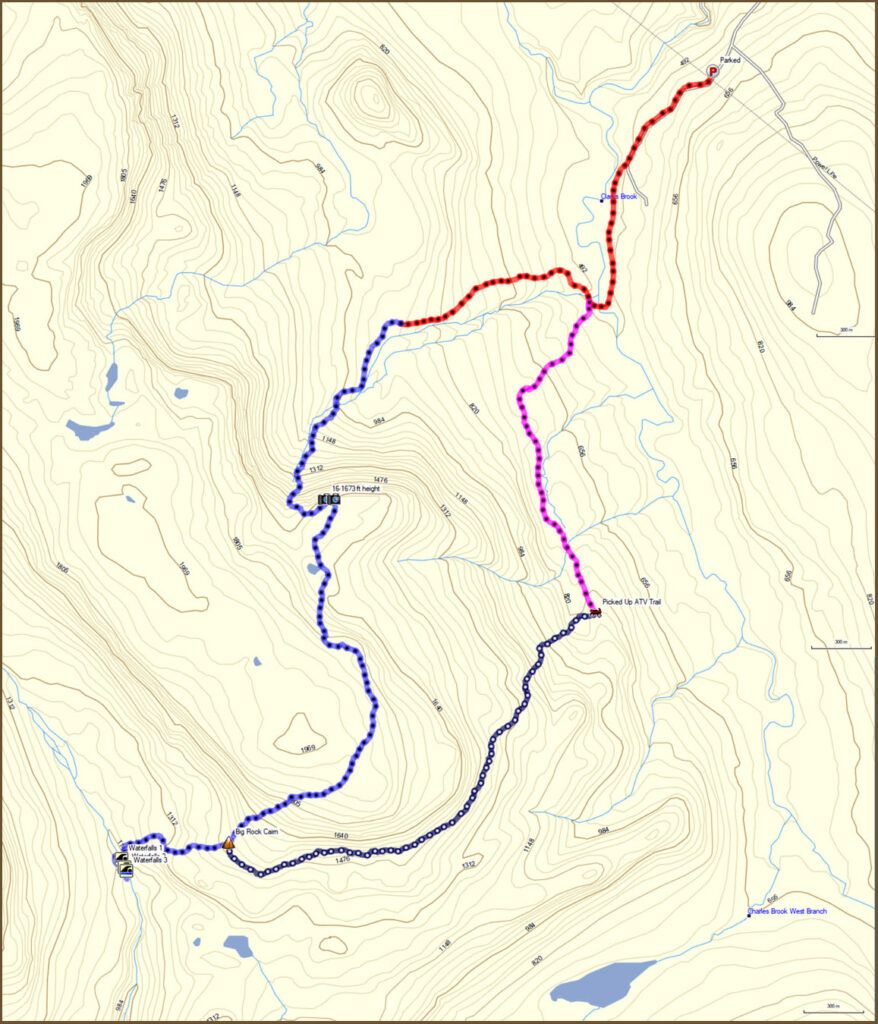
In 2021, spring arrived a month early in Western Newfoundland, which permitted this April 25 trek. Temperatures ranged from 8 to 10C at the base of the mountains and in the valleys, but hovered between 1 and 3C on top, where a 20-30km breeze across large swaths of snowpack added a ‘still winter’ chill.
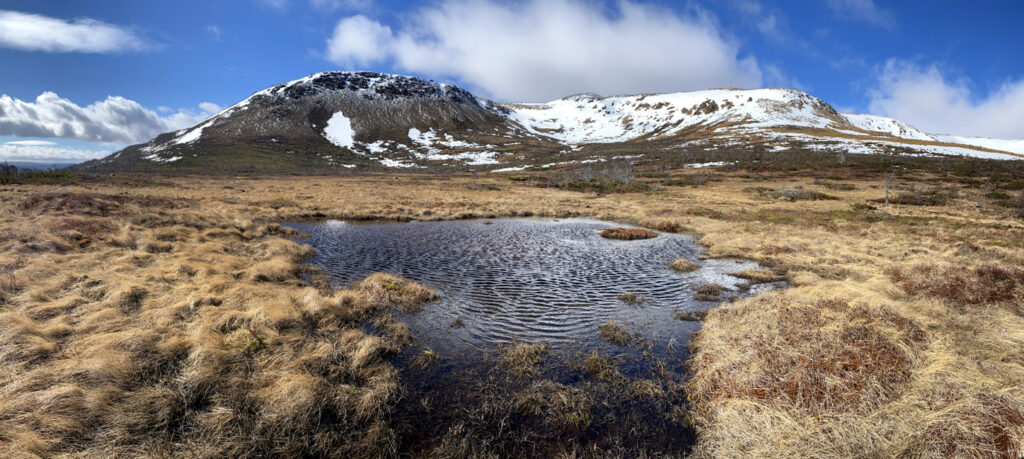
The route Paul took to the top of the Blow Me Downs started at the gate to the Benoit’s Cove water supply off Webcon Road. From there he walked down the 1.5km service road to knee-deep Clarks Brook, which after crossing, he followed a 1km track to a water intake, then turned off to head up the northeast gully.
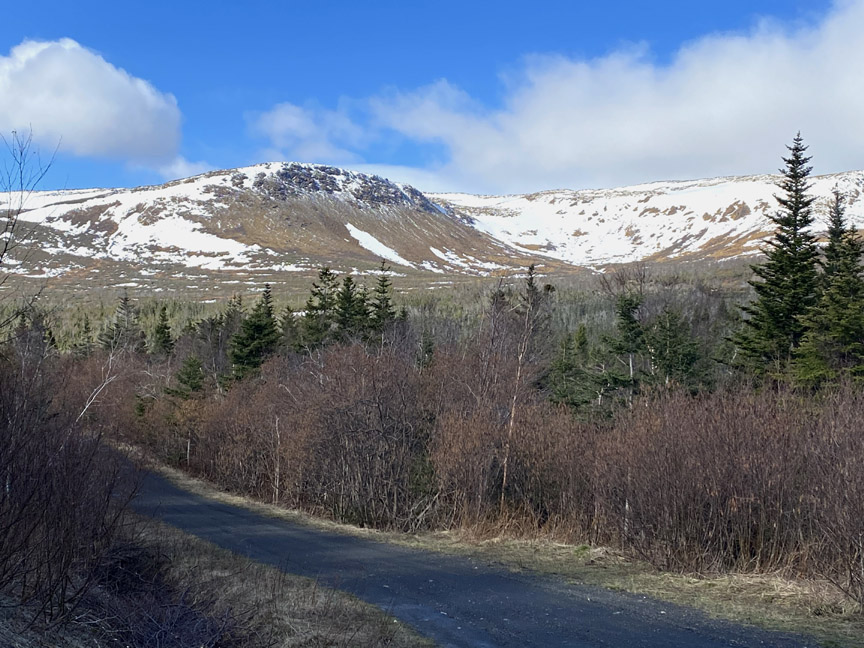
The bottom of the gully is covered mostly with short grasses and shrubs, which transition to small and medium-sized peridotite boulders from the earth’s mantle as the elevation and proximity to the massif increases.
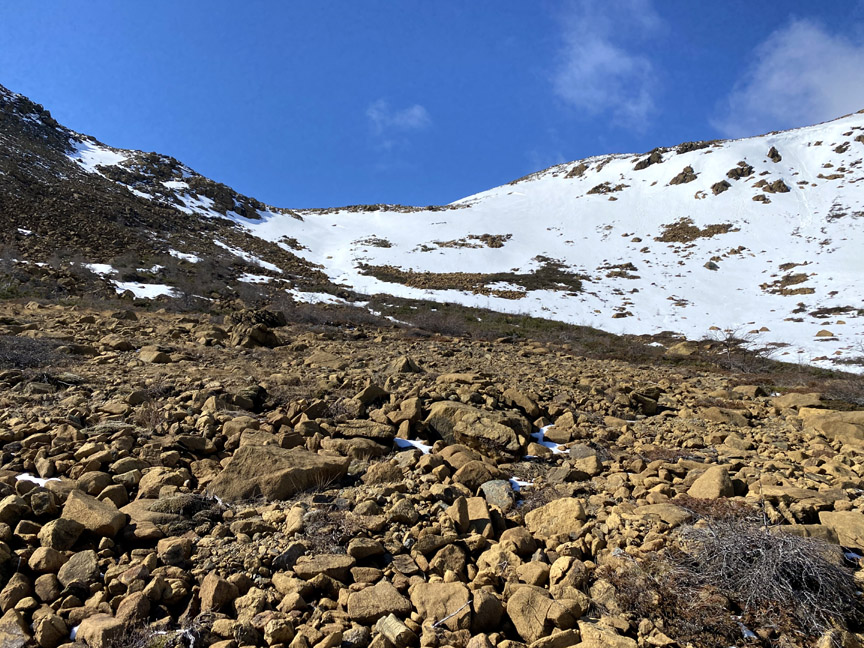
Above the rocks it was necessary to walk across a sizeable patch of snow that filled the hollows on the northeast – leeward – side of the mountains. Looking back the view was expansive, taking in the mountains, lowlands and foothills surrounding the Humber Arm.
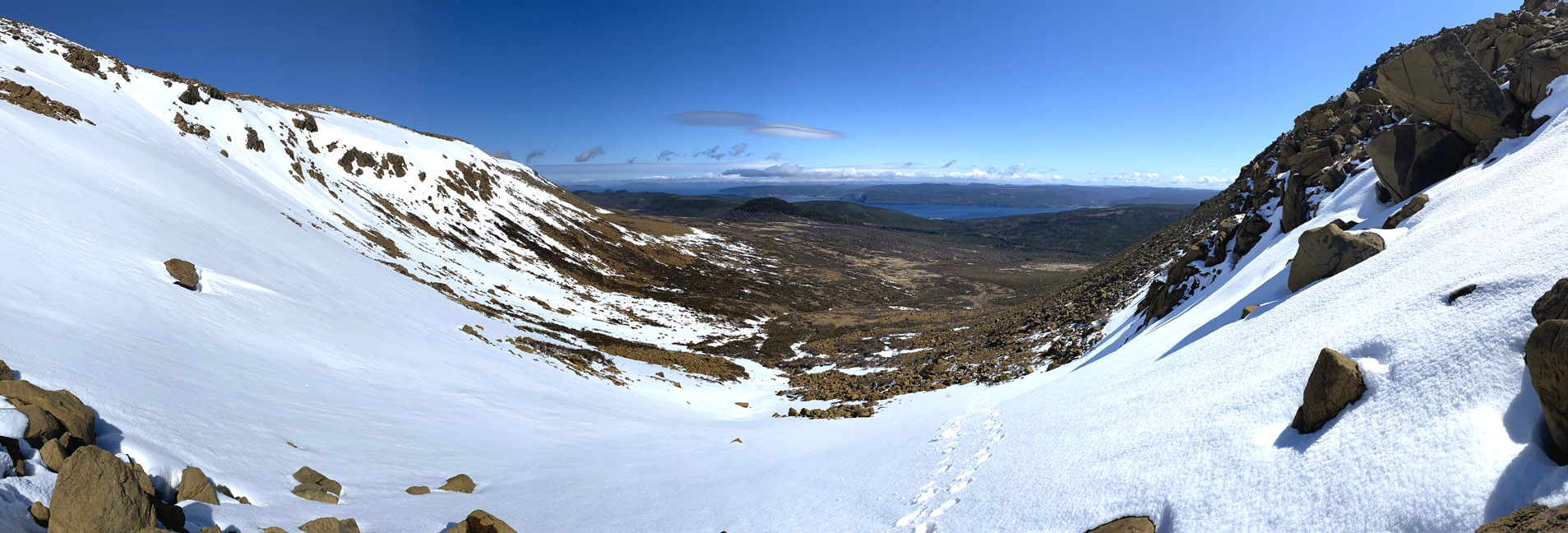
After only a 1.5 hour walk, Paul was on top of the massif, albeit a lower protrusion which provides a great cross-section view of the snow-covered mountains and Bay of Islands beyond.
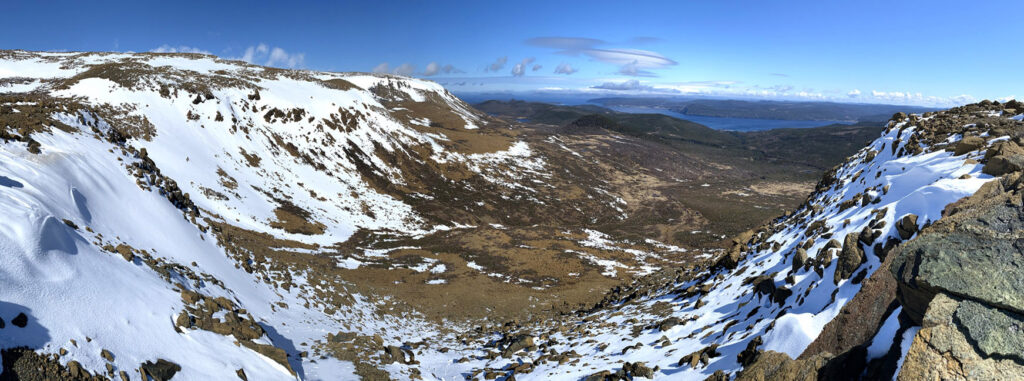
In spite of the snow, it was still possible to see much of the geological composition of the mountains, from rust-colored harzburgite (a form of peridotite) to darker brown pyroxenite to colorful green serpentinite.
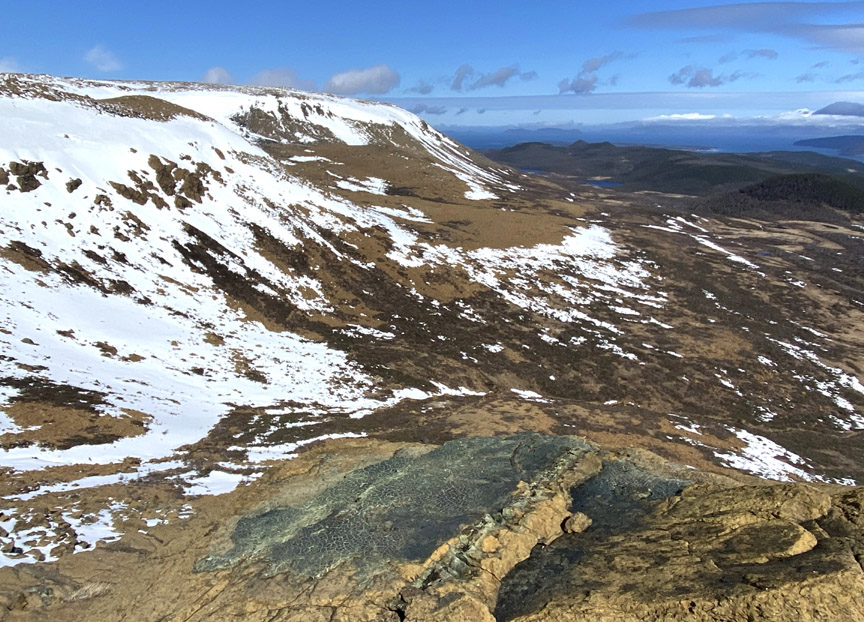
From this mountain ledge, Paul had to climb another 250ft (75 meters) over one kilometer to the top of the plateau, which on the eastern end of the mountains rises to approximately 2,000ft (600 meters).
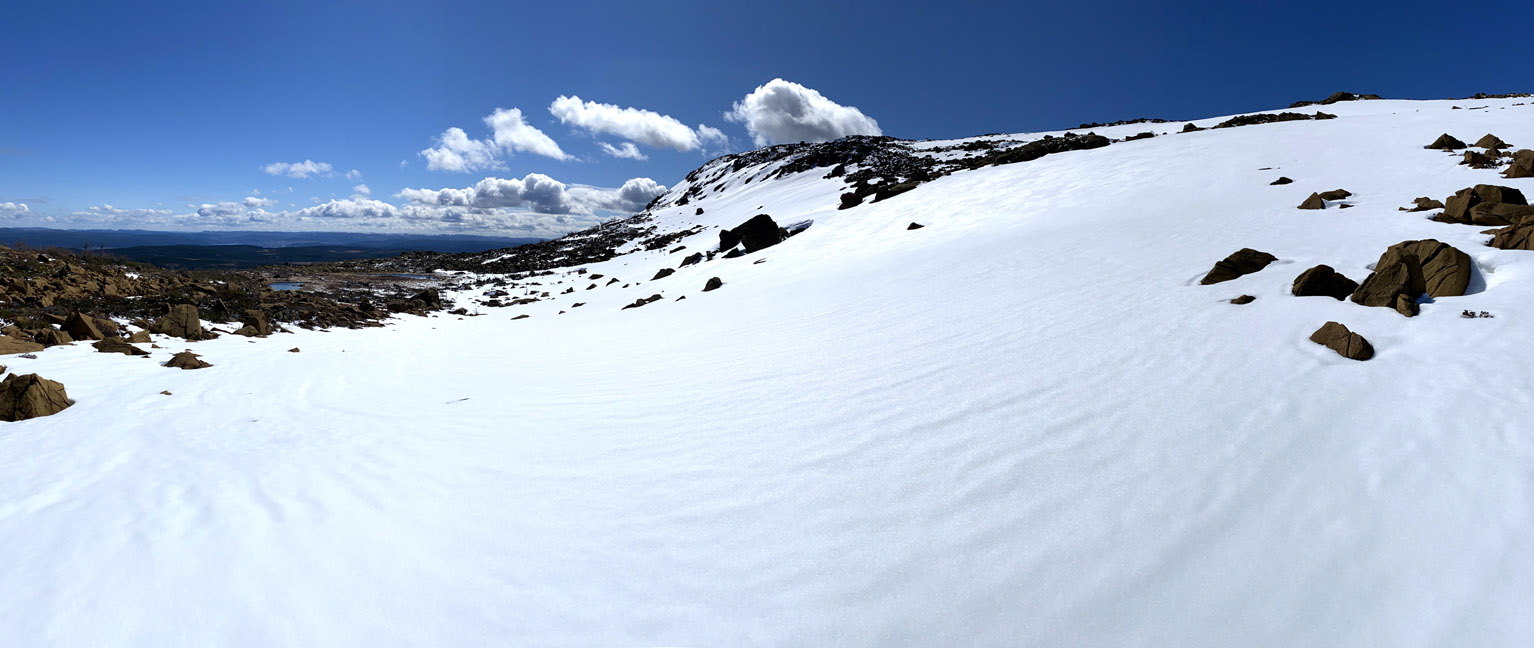
Along the way he could see early signs of spring, from exposed plant life
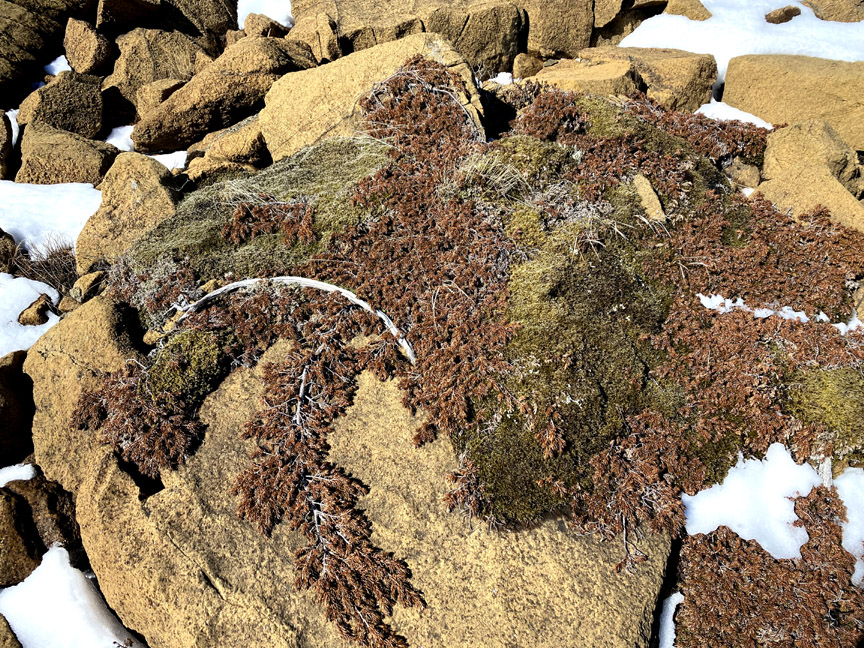
to ice-melting pond.
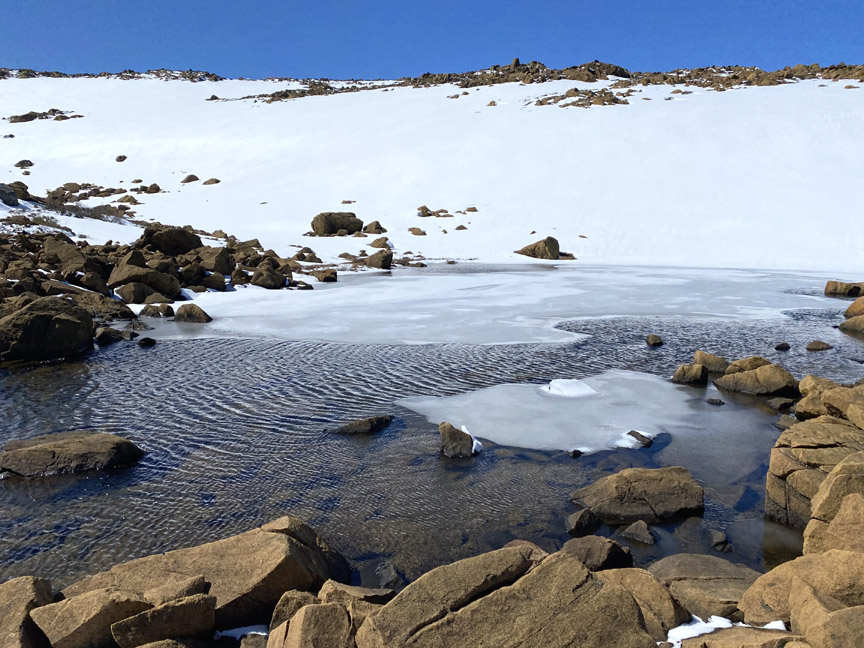
One last glance behind revealed a broad sweeping vista of blue sky, white snow and rusted rock

while the scene underfoot included the odd grey gabbro boulder from the ocean floor, likely deposited by a melting glacier at the end of the last ice age.
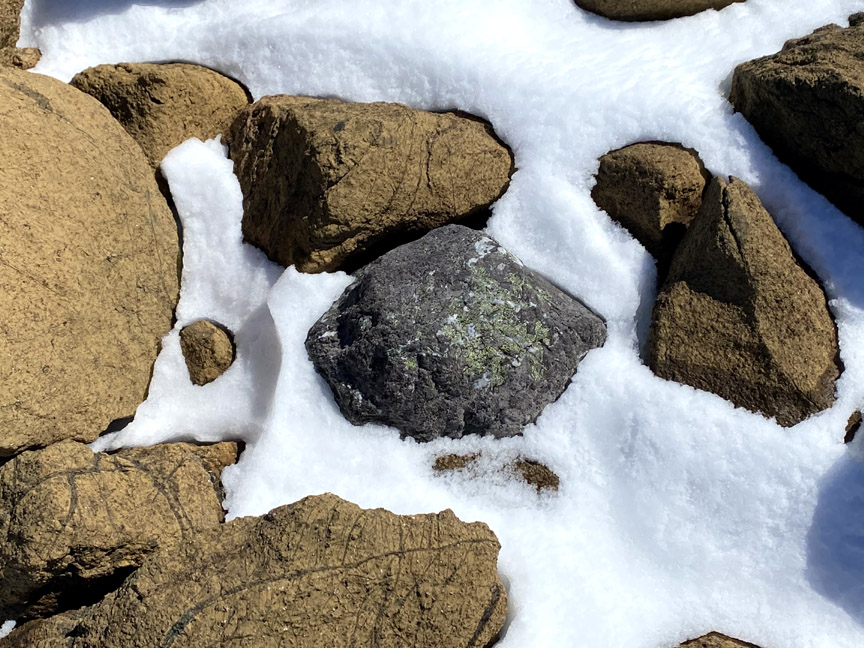
Before long the view south into the eastern end of Knights Brook Gulch revealed itself, as did an ideal gentle slope into the valley below.

Soon the rest of the gulch was also visible, which just weeks ago was the primary snowmobile route onto the Blow Me Down Mountains.

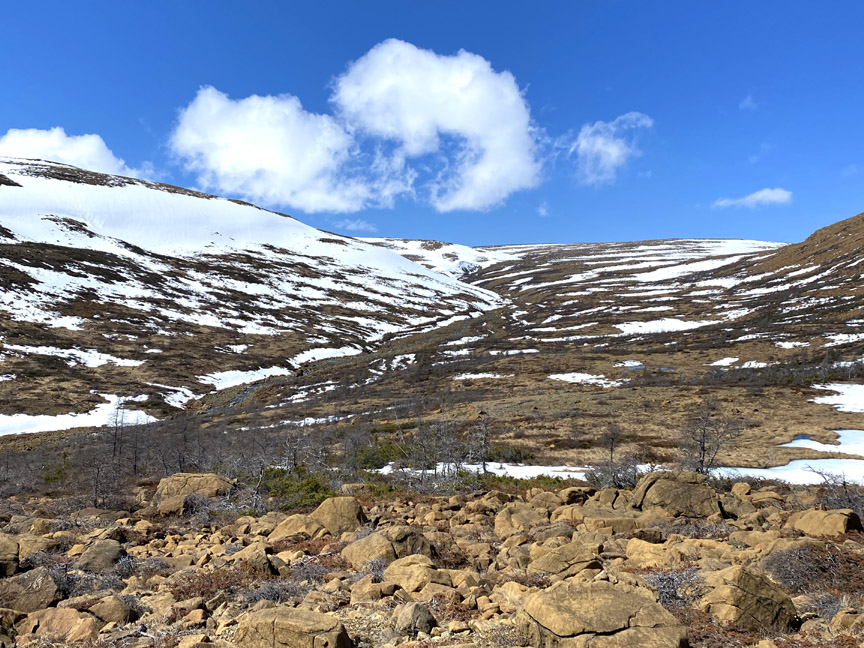
Knights Brook flows approximately 15kms and is to the Blow Me Down Mountains what Fox Island River is to the Lewis Hills. Both start more or less in the center of the massif and flow southeast before making a sharp 45° turn to flow southwest along the eastern flank of the mountains. However unlike Fox Island River which empties into the eastern end of the Gulf of St. Lawrence, Knights Brook empties into the eastern end of Serpentine Lake.

Almost immediately after reaching the brook, Paul is looking down on a small 12ft waterfalls with crystal-clear pool below, ideal for a refreshing dip on a hot summer’s day.
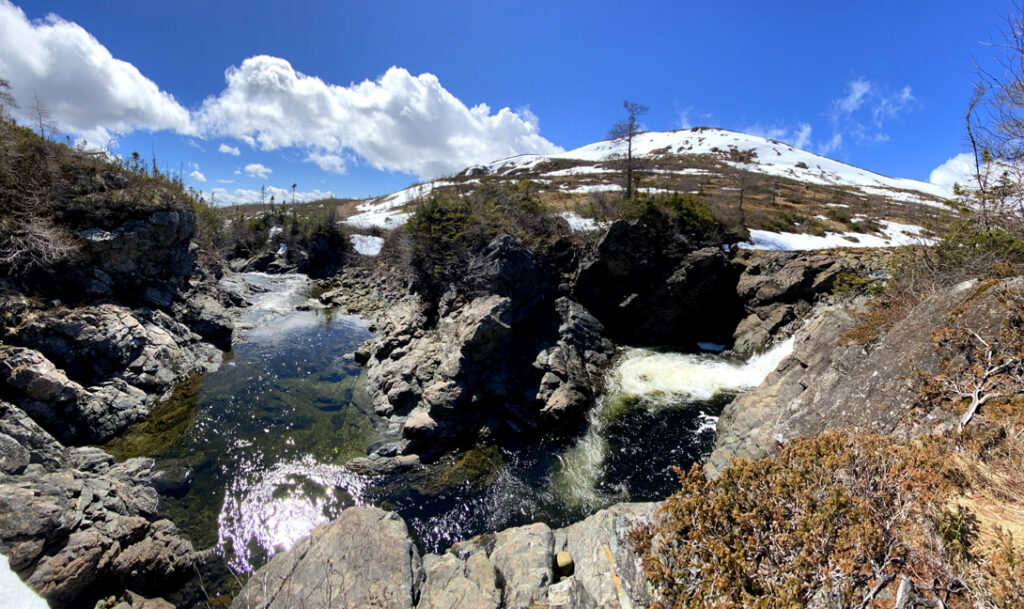
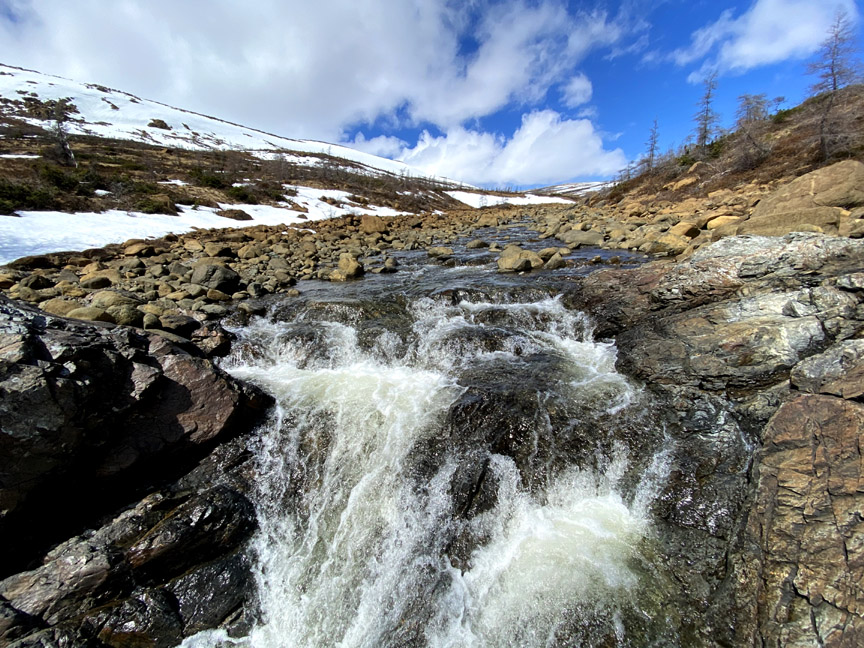
The water is so beautifully clear because of the geological composition of the mountains. The ultramafic rock peridotite is toxic to most plants and its thin nutrient-poor soil lacks the organic matter typically found in Newfoundland forests, bogs and streams.

Just downstream and around the corner is a pretty cascading falls that splits from one into two.

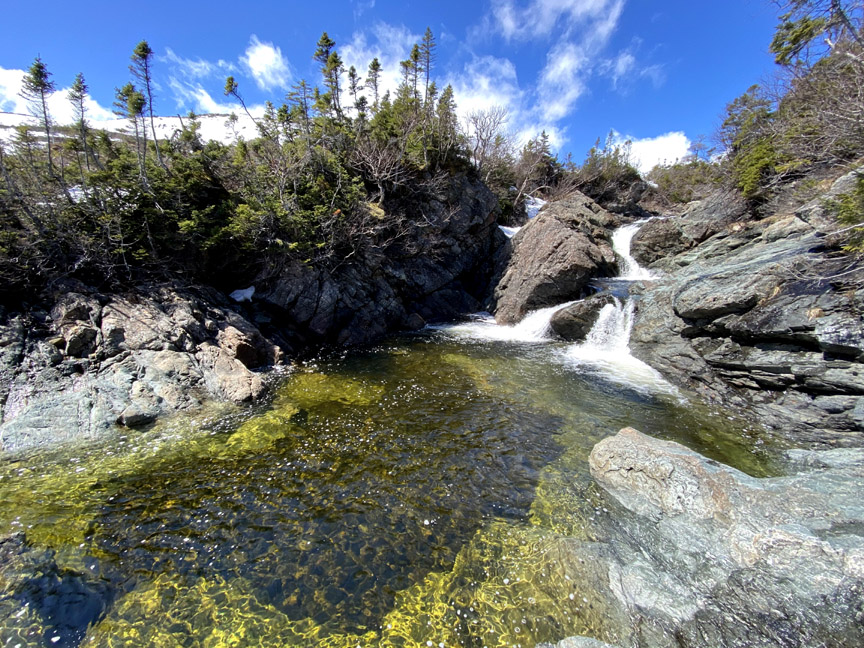

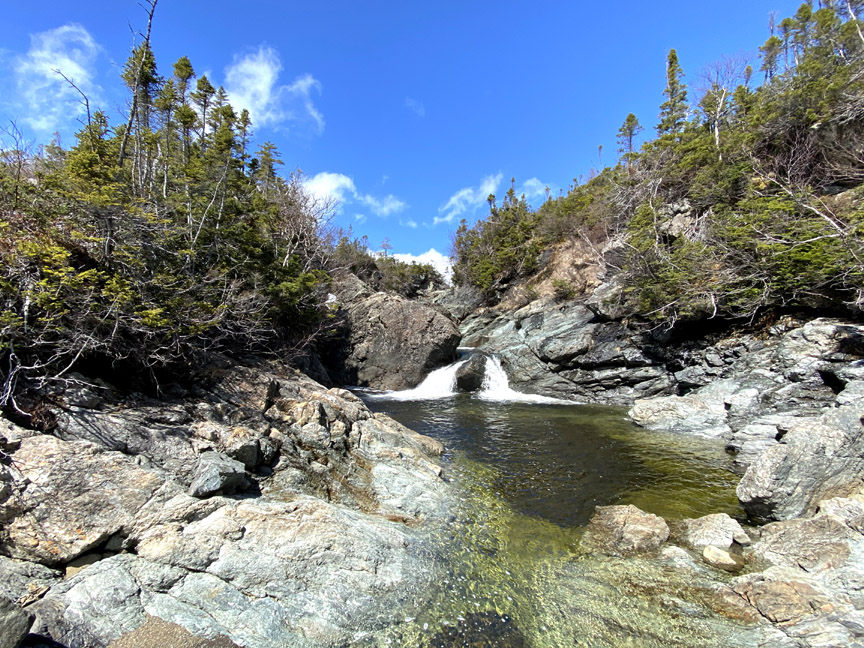
In addition to the waterfalls, the rocks here …
To Be Continued …
